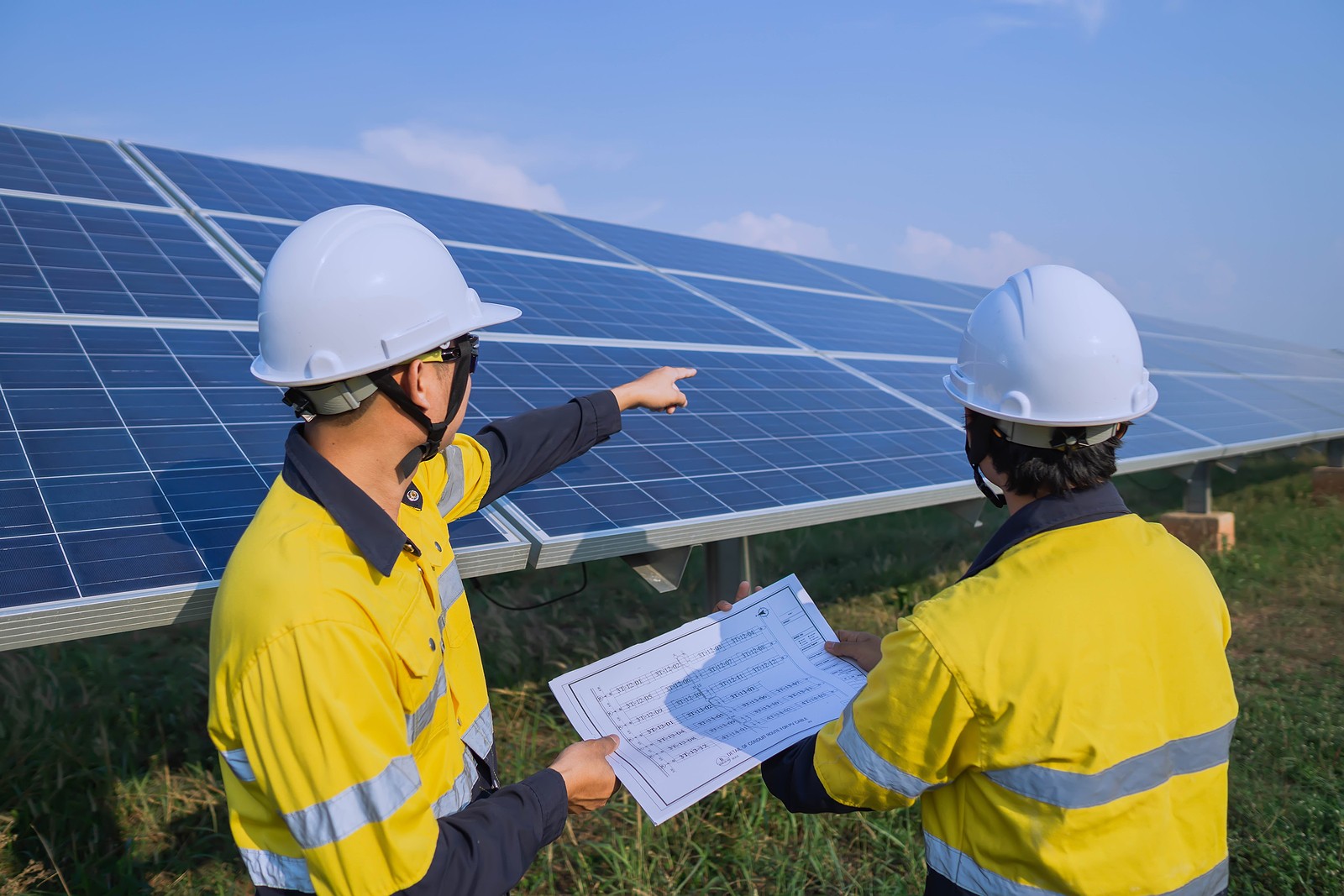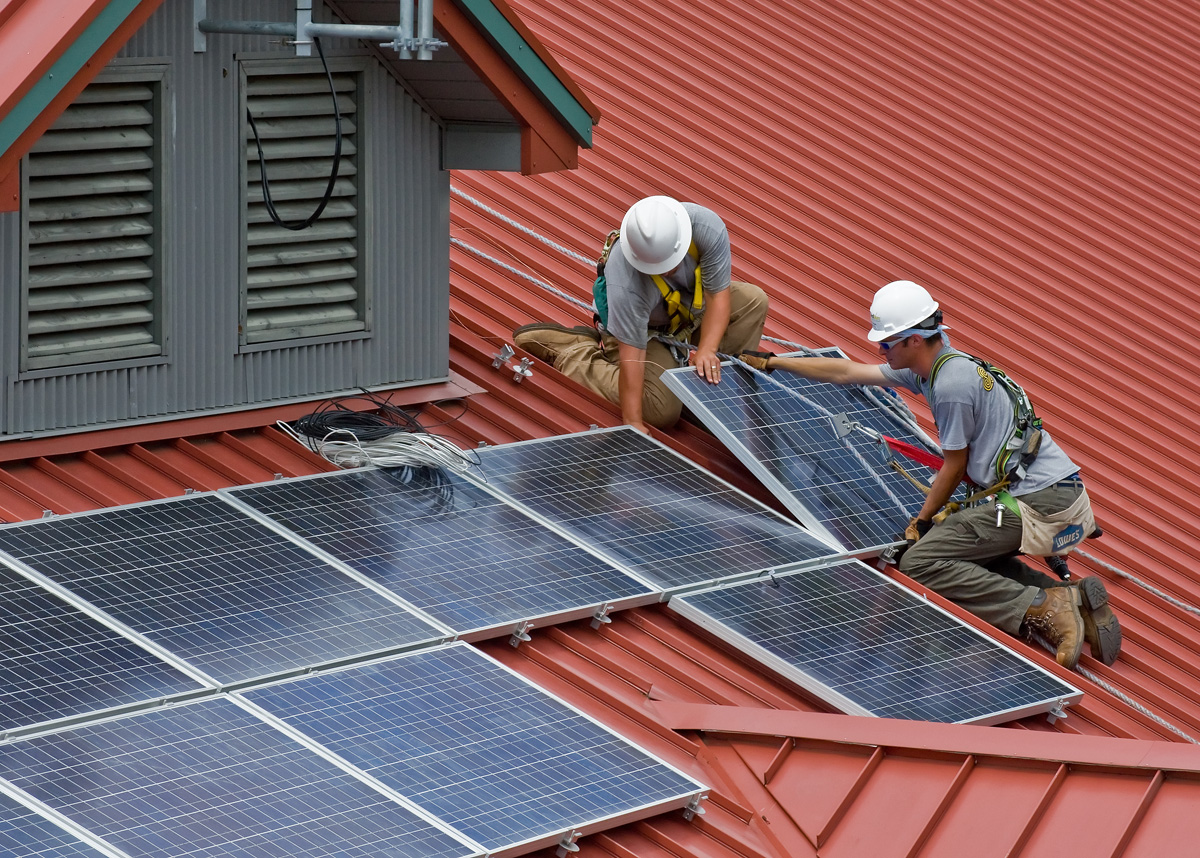Solar Equipment Installation: Professional Setup Of Photovoltaic Systems Can Significantly Reduce Your Energy Expenses
Site Assessment and Preparation
Revealing the Land: Where Solar Dreams Begin
Before the sun's energy can be utilized, a meticulous site assessment must unfold. Envision walking onto your residential or commercial property and wondering, "Is this area really the golden ticket for solar panels?" This is where science fulfills instinct. Evaluating the land includes more than just inspecting for sunshine; it's about comprehending how the environment will dance with your system throughout the year.
Secret Factors in Website Assessment
- Sunshine Direct exposure: Are shadows from trees, buildings, or chimneys lurking where you plan to install? Even a little shadow can whisper away precious watts.
- Roofing Orientation and Tilt: South-facing roofings typically steal the show, but east or west can still play their part wonderfully. The angle of your panels can change early morning chills into afternoon warmth.
- Structural Integrity: Is your roof a fortress all set to support photovoltaic panels, or does it require some fortifying? This step is vital to avoid surprises after setup.
- Space Accessibility: In some cases, the best area isn't on the roof at all. Ground-mounted systems use versatility however need a different sort of groundwork.
Preparing the Canvas: Website Readiness
Once the ideal place is determined, preparation begins. Think of it as setting the stage for a grand efficiency. The roofing system might need repairs, or trees might need a mild trim. Cleaning particles and ensuring the surface area is tidy are little however significant steps that pave the method for ideal panel placement.
Steps to Prepare Your Site
- Conduct a detailed shading analysis utilizing specialized tools or apps.
- Check and enhance the roofing structure, if required.
- Clear obstacles that might obstruct sunshine, consisting of overgrown branches.
- Plan electrical wiring paths and inverter positioning to take full advantage of efficiency and security.
- Get any required approvals or approvals for structural changes.
Why Does This Matter?
Think about the story of a homeowner who eagerly set up panels without thorough site assessment, only to discover power generation irregular. The perpetrator? A single chimney casting a shadow in the late afternoon, reducing output when energy demand peaks. This shows an essential reality: the sun is foreseeable, but our surroundings are not. Every nuance matters.
In the end, the preparation phase is the quiet architect of success. It turns raw capacity into concrete, tidy energy. So, when considering photovoltaic panel setup, ask yourself: Have I truly read my residential or commercial property's solar story? Because in that story lies the secret to sustainable power.
Exploring the Varieties of Solar Panels
Ever based on a roof and wondered why some solar panels shine like black mirrors while others shimmer with a bluish tint? The secret depend on their material structure, which significantly influences efficiency and setup strategies. Three main types control the market:
- Monocrystalline panels: Crafted from a single crystal structure, these are the champs of effectiveness, often boasting rates above 20%. Their uniform black appearance is streamlined but needs precise setup to optimize efficiency.
- Polycrystalline panels: Made from several silicon pieces melted together, they offer a speckled blue look. A little less efficient than monocrystalline but generally more forgiving in installation nuances.
- Thin-film panels: These are flexible, lightweight, and less noticeable, thanks to their amorphous silicon or other materials. Their lower performance implies more area is required-- a substantial consideration when planning rooftop designs.
Material Matters: Beyond Silicon
Silicon reigns supreme, but did you know that the substrate and encapsulants can make or break the panel's longevity? Glass with high transmittance, resilient polymers, and advanced anti-reflective coatings are subtle heroes. For example, an improperly picked encapsulant can trigger premature yellowing, sapping energy output gradually. It's a quiet battle of materials that a lot of installers ignore up until efficiency dips.
Setup Insights: What the Pros Know
When installing panels, the weight difference between types matters. Thin-film panels weigh less, relieving stress on older roofs. Nevertheless, their larger size needs more precise circuitry and assistance style. Monocrystalline panels, though heavier, can be spaced tighter, enhancing roof property. Here's a quick rundown of specialist pointers:
- Confirm panel weight and roof load capacity before choice.
- Consider thermal growth rates of panel products; mismatches can trigger micro-cracks.
- Choose mounting hardware suitable with the panel's frame product to prevent deterioration.
- Use reflective backing products to enhance light capture in shaded areas.
Fun Reality: The Anecdote of the "Blue vs. Black" Debate
One installer as soon as informed me about a customer who firmly insisted on blue panels simply for aesthetic appeals. Months later on, the client discovered a small dip in energy production compared to their next-door neighbor's black monocrystalline setup. This story echoes an axiom: often, what looks good does not always carry out best. Yet, with the best angle and setup, even polycrystalline can shine.
Installation Process and Strategies
Think of hoisting a panel onto your roof Eco Friendly Solar Panels for the really very first time. The dance in between accuracy and perseverance starts here. The solar panel installation process isn't just about bolts and brackets; it's a mindful orchestration of angles, weights, and weather factors to consider. Have you ever contemplated how a minor misalignment can shave off precious energy production? That fraction of a degree can be the distinction between a thriving system and one that underperforms.
Step-by-Step Installation Insights
- Website Evaluation: Before any equipment touches your roofing system, the assessment stage includes examining roof orientation, shading elements, and structural integrity. This step goes beyond the surface-- literally. Understanding the roofing's load capability is crucial to prevent surprises later.
- Installing Setup: The choice in between flush mounts and adjustable racks depends on your roofing system type and sun direct exposure. Adjustable racks offer an ace in the hole-- tweak angles seasonally to record maximum sunlight.
- Panel Placement: Panels need to be spaced and protected to prevent thermal growth problems and water pooling. Neglecting this can result in warped panels or leaks, a subtle but expensive oversight.
- Electrical Links: Circuitry is where lots of setups falter. Using appropriate gauge wires, protected connectors, and water resistant junction boxes makes sure longevity and security. Ever seen a panel system underperform since of loose or corroded connections? It's more typical than you may believe.
- System Testing: Conducting an extensive efficiency check post-installation can capture problems before they escalate. Voltage tests, inverter functionality, and monitoring software application calibration are non-negotiable steps.
Pro Tips for Ideal Setup
- Consider microinverters or power optimizers to alleviate shading impacts and take full advantage of output from each panel.
- Incorporate a grounding system thoroughly to prevent electrical sound and safeguard versus lightning strikes.
- Usage corrosion-resistant mounting hardware, specifically in seaside or damp environments, to extend system life-span.
- Apply weatherproof sealants at every roofing system penetration to prevent future leakages-- a tiny lapse can lead to decades of water damage.

The Often-Overlooked Components
Lots of installers neglect the subtle impact of roof pitch and seasonal sun angle variations. For example, a flat roofing system installation might take advantage of tilted racks angled in a different way for winter and summer. This flexibility can improve yearly energy yield by as much as 15%. The synergy in between panel spacing and airflow is critical. Panels that are too close together can trap heat, decreasing performance-- a subtlety that just skilled installers value.
| Installation Element | Expert Insight | Typical Oversight |
|---|---|---|
| Mounting Type | Adjustable racks make it possible for seasonal angle changes. | Utilizing set installs on flat roofing systems. |
| Electrical Wiring | Correct gauge and waterproof ports ensure longevity. | Ignoring waterproofing results in corrosion. |
| Panel Spacing | Adequate space permits heat dissipation. | Panels too close cause overheating. |
Precaution and Best Practices for Photovoltaic Panel Setup

Ever tried stabilizing on a roofing while handling sharp-edged solar panels? It's not precisely a Sunday walk. The most ignored aspect during solar panel setup is the careful attention to safety protocols that keep installers alive and well. The dance in between weather, electrical power, and heights requires a near-militant discipline.
Vital Security Gear: Your First Line of Defense
- Non-slip footwear: Slipping on a slick roof can turn a regular job into a tragedy.
- Harnesses and lanyards: Correct fall arrest systems are non-negotiable.
- Insulated gloves: Protect versus electrical shocks, particularly when handling live wires.
- Protective glasses: Shield eyes from UV rays, dust, and flying debris.
- Construction hats: Roof work means unanticipated bumps-- do not ignore falling objects.
One experienced installer once shared how a basic gust of wind almost sent a panel-- and himself-- dropping. That close call enhanced why double-checking harness connections isn't simply treatment; it's survival.
Pre-Installation Preparation: A Plan for Security
Before stepping on the roofing, a comprehensive website evaluation is vital. Are the shingles brittle? Is the roof pitch alarmingly high? These aspects dictate the kind of safety devices needed and the installation approach. Overlooking them welcomes catastrophe.
Think about the electrical layout too. Solar arrays link to inverters, breakers, and home circuitry-- all possible shock dangers if mishandled. Labeling circuits plainly and de-energizing systems when possible reduces danger significantly.
Finest Practices to Avoid Common Threats
- Weather condition check: Prevent installation during rain, snow, or high winds. Moisture combined with electrical power is a recipe for catastrophe.
- Tool management: Secure tools with lanyards or tool belts. Dropped tools can injure people below or damage panels.
- Two-person rule: Never work alone on roofs. An extra pair of eyes and hands can be a lifesaver.
- Clear interaction: Establish hand signals or walkie-talkie systems when verbal cues get lost in wind or distance.
- Panel handling strategy: Constantly lift panels with knees, not back, to avoid strain and maintain control.
Electrical Safety: Beyond the Fundamentals
Numerous underestimate the complexity of DC voltage created by panels. Unlike air conditioner, DC arcs are harder to snuff out, making arc fault security gadgets essential. Also, comprehending the wiring schematic thoroughly before touching anything can prevent electrocution.
| Security Element | Pro Idea | Why It Matters |
|---|---|---|
| Utilize Examination | Look for wear before each use | Worn harnesses can fail during a fall |
| Panel Orientation | Plan design to decrease awkward lifts | Avoids muscle injuries and panel damage |
| Electrical Seclusion | Use lockout/tagout treatments | Ensures power is off during wiring |
Does the thought of dealing with high-voltage DC make you pause? It should. Respecting the unnoticeable forces in play and preparing for them with the right safety frame of mind transforms a risky task into a workable one.